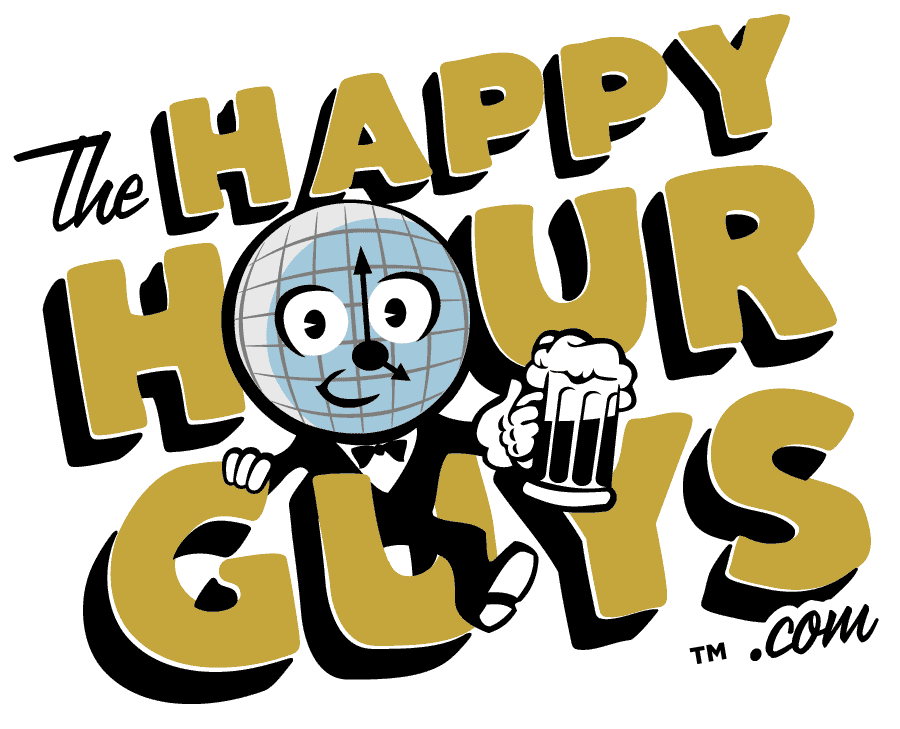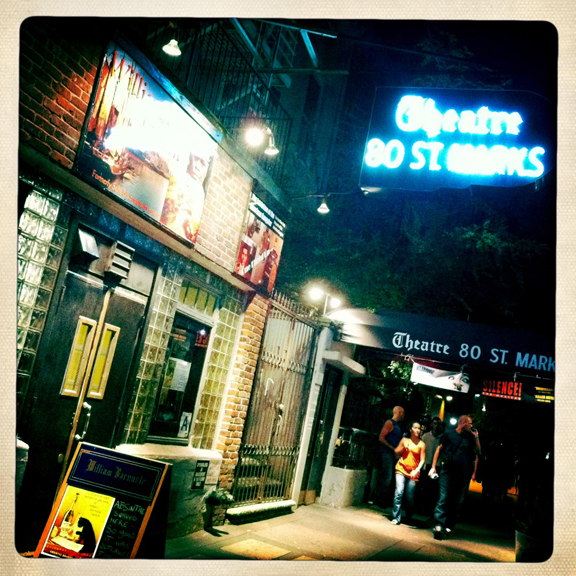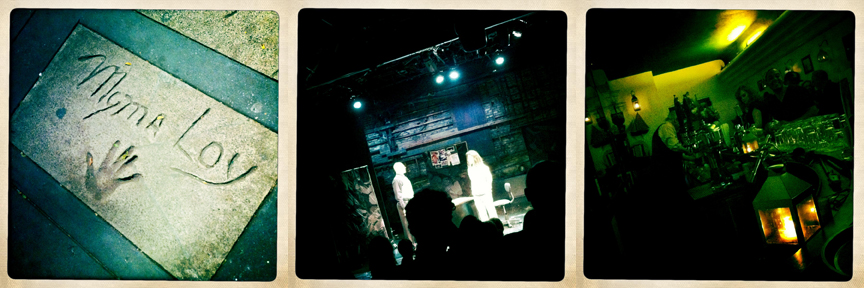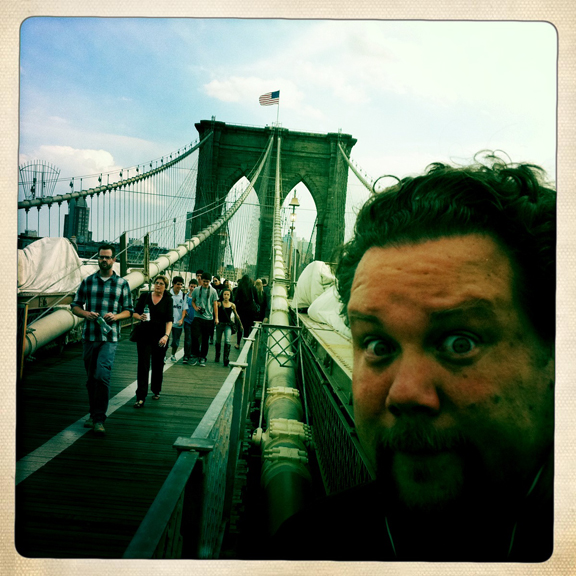 The Brooklyn Bridge.Howdy y'all! Artsy guy here, reelin' from a great day of wandering around the great city of NYC. I crossed a wee wish off the list today and walked across the Brooklyn Bridge. The sky was full of chunky white and grey clouds, but the sun was a-peekin' through, giving quite a show. As I ambled from the Brooklyn side (DUMBO) to Manhattan (Lower East Side), I was entranced by this iconic piece of architecture as well as that offered from the south end of Manhattan (including One World Trade Center as it climbs ever upward). A highly recommended jaunt!
The Brooklyn Bridge.Howdy y'all! Artsy guy here, reelin' from a great day of wandering around the great city of NYC. I crossed a wee wish off the list today and walked across the Brooklyn Bridge. The sky was full of chunky white and grey clouds, but the sun was a-peekin' through, giving quite a show. As I ambled from the Brooklyn side (DUMBO) to Manhattan (Lower East Side), I was entranced by this iconic piece of architecture as well as that offered from the south end of Manhattan (including One World Trade Center as it climbs ever upward). A highly recommended jaunt!
And as I found my footing on the bedrock of Manhattan, I figured such a trek should be accompanied by refreshments at one of the island's oldest drinking and dining establishments, the Bridge Café. At the intersection of Dover St. (which runs along the southern base of the bridge) and Water St., you'll find an old storefront that poured its first wine and beer in 1794 when the East River licked at the back of the foundation and the bridge hadn't yet been built (and wouldn't be for 90 years). The years since have found it in different hands and offering varied services (an 1855 census lists six prostitutes as residents), but the rough and tumble history of this neighborhood has long been accompanied by the liquid encouragement of the shopkeepers at 279 Water Street. Aaron Burr and Alexander Hamilton argued sides of an insurance claim battle embroiled here. The book The Gangs of New York describes a despicable dive called "The Hole in the Wall" at this location. And in later years, as the place was polished, Mayor Ed Koch called this his favorite restaurant and held court here twice a week. So much history in these clapboard walls!
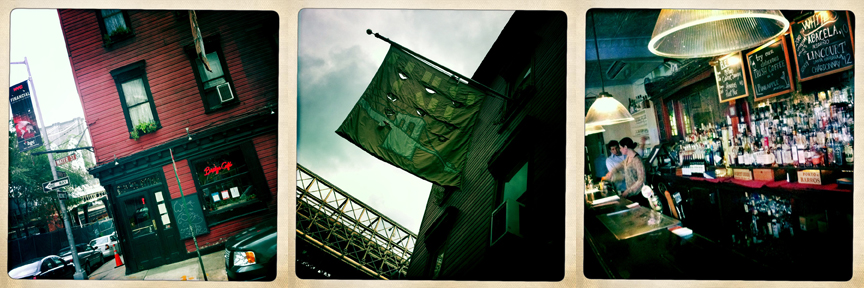 The Bridge Café in the shadow of the Brookly Bridge, and the bar.
The Bridge Café in the shadow of the Brookly Bridge, and the bar.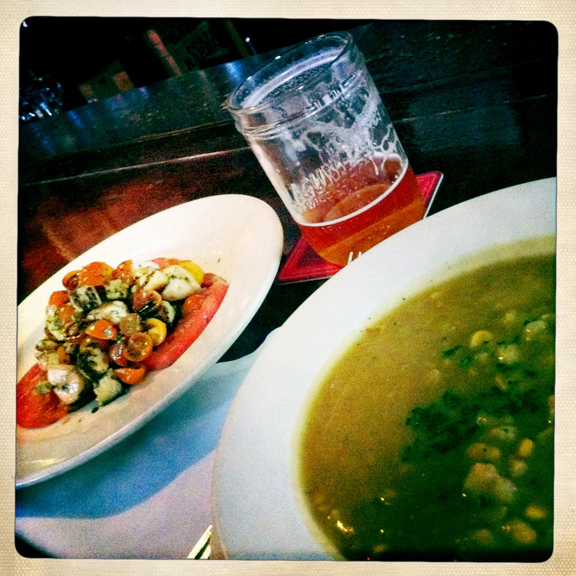 Tuck in, y'all!On this visit, I found a charming restaurant with a talented chef and an incredibly well-stocked bar. Whisky lovers will find quite a selection... scotches, ryes, bourbons, etc. Craft beer lovers won't be disappointed (Hear hear!) with taps offering Kelso, Sixpoint, Lagunitas, Smuttynose, etc. and quite a bottle list. The chef didn't disappoint even this transient lunch-seeker. I absolutely loved my southwestern avocado soup with fire roasted corn and hominy... and a marinated mozzarella and cherry tomato salad on a bed of sliced beefsteak tomatoes, with croutons, basil, and amazing balsamic reduction. I need more. And there's plenty more to be had on the menu. I'll be back tomorrow.
Tuck in, y'all!On this visit, I found a charming restaurant with a talented chef and an incredibly well-stocked bar. Whisky lovers will find quite a selection... scotches, ryes, bourbons, etc. Craft beer lovers won't be disappointed (Hear hear!) with taps offering Kelso, Sixpoint, Lagunitas, Smuttynose, etc. and quite a bottle list. The chef didn't disappoint even this transient lunch-seeker. I absolutely loved my southwestern avocado soup with fire roasted corn and hominy... and a marinated mozzarella and cherry tomato salad on a bed of sliced beefsteak tomatoes, with croutons, basil, and amazing balsamic reduction. I need more. And there's plenty more to be had on the menu. I'll be back tomorrow.
Get thee to the Bridge Café, y'all! It's a perfectly charming fine dining establishment rising from the foundation of a whole lotta history. Good stuff! That's what's HOPpenin', y'all!
